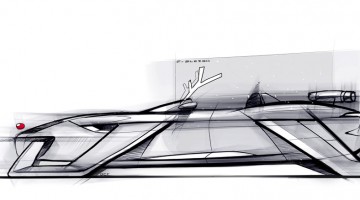Jaguar Land Rover offers crankandpiston.com a quick preview of motoring technology that could be commonplace in just a few years
The future of motoring is now. Sounds like marketing nonsense, but in many ways it’s true. This author’s 2003 Renault Clio Cup 172, for example, has power steering and a stereo, and that’s about it. No ABS, no stability control, no cruise control. Fast forward just 13 years, and we’re in a world where cars can literally drive themselves, and only legislation and testing requirement stand in the way of autonomous cars becoming a regular sight on our roads.
But there’s much more to come. Current tech like adaptive cruise control and clever automatic dampers will evolve further. Sensors around the car will talk to each other in ever more detail, and the vehicles of the next decade will become even more advanced, on and off the public highways. We got a window into that at Jaguar Land Rover’s UK proving ground in Gaydon, where after carefully covering up our phone cameras, engineers agreed to give us a sneak preview of the tech we’ll see in the coming years.
TERRAIN-BASED SPEED ADAPTATION
Several cars available today use GPS and mapping data to know if sharp corners are coming up, and adjust the gearing accordingly. Adaptive cruise control can tell if there’s a slowing car on the road ahead, and modulate the speed. But TBSA takes things to a whole new level, and takes it off road. A stereo camera system in the car’s windscreen continuously scans the route ahead, up to 30 metres, and can distinguish what the terrain is like. Set a speed, as you would with cruise control, and TBSA will modulate your pace according to the severity of the ground ahead.
This is in mid-development, and on our test drive the data was shown in a raw graphical form on a screen, picking out the edge of tracks, ditches, crests – anything that requires a change of speed. It knows when you’re turning to avoid something in front of you, and it knows the ride is like using the inertial measurement unit in the car’s restraint system. Used with other systems, this could make off-roading a lot more accessible for the inexperienced.
SURFACE ID
One of the problems on the journey towards autonomous driving is that not all roads are the same. And sometimes, there are no roads at all. Surface ID is a prototype tech that uses two ultrasonic sensors in the front of the car to scan the road and, using the signal that bounces back, compare it against an extensive database to determine what type of surface it’s about to hit. It can even differentiate between different types of sand. The car can then set up the Terrain Response system accordingly.
Current Terrain Response systems are reactive, meaning they detect what the wheels are doing under the car and change accordingly. Once Surface ID is ready to go, the car will be ready before it arrives on the new surface, which is reassuring if you’ve handed over driving control.
- Story concludes on page 2



